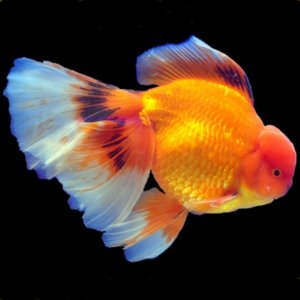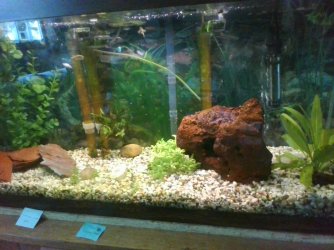oceanArnold
New Member
I set up my dads 40 something year old 30 gallon fish tank back in December of 2023. All of the gravel and rocks were also my fathers and were sanitized using boiling water before placed in the tank. The tank only ran for about 2 weeks before I got fish a beginners mistake I was way to excited, and realize that this was a grave mistake, but never the less I started with 4 swords, 2 platies, and two guppies. I also had bought one live plant which had brought two stowaways, snails, which at the time I did not realize how much of a pest they would become. Within 2 weeks everything was still going well and we bought a Chinese algae eater and a common pleco. About a week later the big male platy died and all of the fish were constantly hiding turns out it was the chinese algae eater and we had to return him. Within a couple days my pleco died, we believed that he starved to death. When we brought the dead pleco in we bought almost 8 guppies (probably the biggest mistake I had ever made. Little did I know that the fish store we bought our fish from had columinaris and within a month all of my fish were dead other than the 5 babies that had been had my some of the guppies and the 2 platies and 3 swords and one adult guppy named Aunty blue tail. the columinaris I stopped with hydrogen peroxide over a period of a month. Weeks later I bought a little female micky platy from petsmart, to test if the columinaris was gone and a week after that my friend bought me 4 danios for my birthday. A week after that I got 3 baby blue wag platys. And a week after that the micky platy wasted away and died, then my female platy did, then my male platy did, then I got a endler and 3 neocardinias (shrimp) to deal witht the hair algae problem. Then one of the swords wasted away and died and then another did and a third did, then the two female baby platies died and all three shrimp died.( note at this point there are 40 or more snails and lots of algae). At this point I thought that the snails were the problem and that crushing them and feeding them to my fish was not working, so I stopped doing that and I got a chain loach and he cleaned up most of the snails and I got my dream fish which I was debating because I knew that fish were dying but my dad trying to not have me freak out just said fish die and none had died in about 2 weeks. So I got a hillstream loach. Except I have a under gravel filter and the snails reproduce under the panels and come up through the up pipes so they re populated and one of my baby guppies wasted away and died, and now I treated the tank with prazi pro and the next day my fat danio had a bunch of hoels in it and was dead, then death stopped for a week and then Aunty blue tail got it and has been wasting away, and that is were we are at. I am infested with snails, Aunty blue tail has a bent tail and has fin rot on her tail and is emaciated jusst like all of the other ones who have died before her, and just like them eventually I will find her breathing really hard on the bottom of the tank and then dead. And at this point the thought is that the ethical choice is to give all of my fish to the one store I trust because they actually are good with fish and are proffesionals/experts not just people hired for $15 an hour. They raise the fish and so on. I just do not know what to do anymore.





